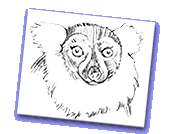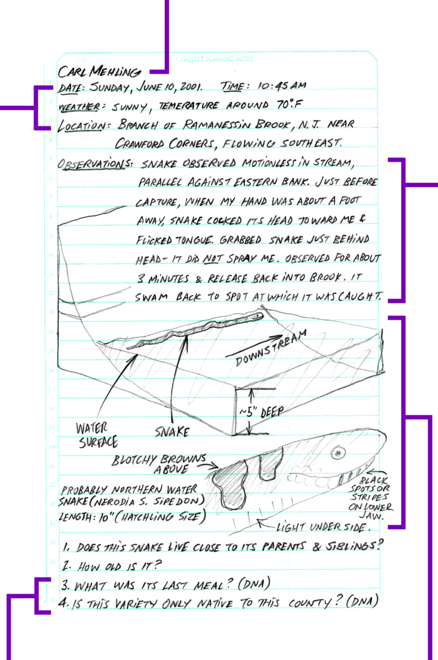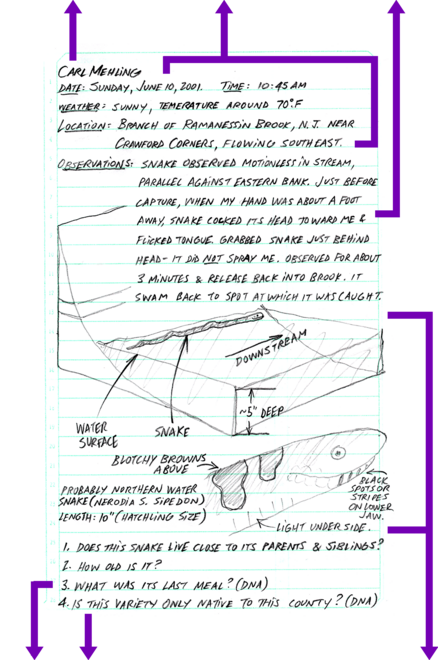

Scientists learn about animals by observing them and from analyzing their DNA. Starting your own field journal is the first step towards understanding the wildlife in your area. Here's how:


Pick a type of animal or pet to watch in your area. Write down the following information:
- Date and time
- Weather conditions
- Exact location

Draw a picture of the animal.

Write down any observations you have about the way the animal looks or behaves.

Write down any questions that you have about the animal. Write DNA next to any questions that you think you could answer if you could go to the lab and analyze the animal's DNA.
Write the name(s) of the people who attended the field trip.
Include the date, time, and weather conditions for the day.
Write the location of the field trip.

Record any observations about the animal's size, behavior, coloration, and skin texture.
Write "DNA" next to those questions you think you could answer if you could analyze the animal's DNA in a lab.
Using scientific illustration, sketch a picture of the animal and the environment where it was discovered.
Write the name(s) of the people who attended the field trip.
Include the date, time, and weather conditions for the day.
Write the location of the field trip.
Record any observations about the animal's size, behavior, coloration, and skin texture.

Write "DNA" next to those questions you think you could answer if you could analyze the animal's DNA in a lab.
Using scientific illustration, sketch a picture of the animal and the environment where it was discovered.
Image Credits:
lemur illustration, by Steve Thurston; journal page, ©AMNH/Carl Mehling




 Biodiversity
Biodiversity
 Brain
Brain
 Genetics
Genetics
 Marine BiOLogy
Marine BiOLogy
 MicrobiOLogy
MicrobiOLogy
 PaleontOLogy
PaleontOLogy
 ZoOLogy
ZoOLogy
 AnthropOLogy
AnthropOLogy
 ArchaeOLogy
ArchaeOLogy
 Astronomy
Astronomy
 Climate Change
Climate Change
 Earth
Earth
 Physics
Physics
 Water
Water
